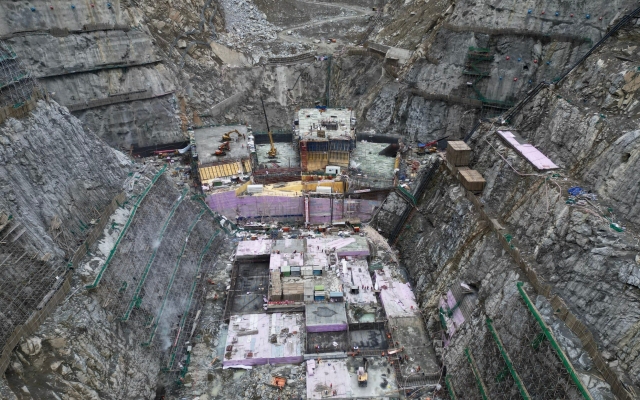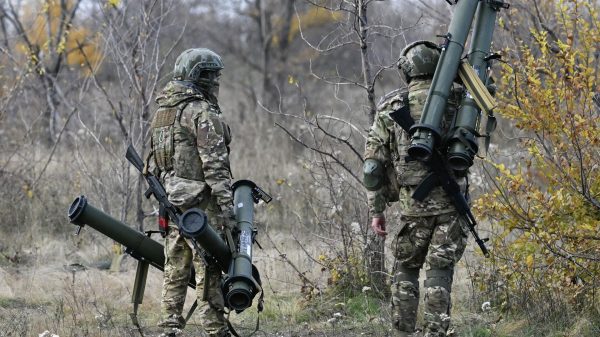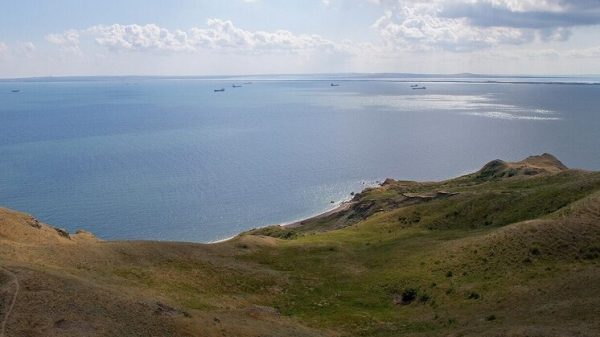 Protesters in Derg rally against hydroelectric project
Protesters in Derg rally against hydroelectric project
Chinese authorities arrested more than 1,000 Tibetans in one day in a widespread crackdown following unprecedented mass protests erupted almost two weeks ago.
Hundreds of monks and local residents took to the streets to protest government plans to demolish at least two villages and six monasteries, displacing thousands of Tibetans, to build a hydroelectric dam.
p>Chinese police responded to protesters with stun guns, water cannons and pepper spray, arresting at least 100 people on Thursday.
Then on Friday, authorities arrested more than 1,000 people. Tibetans in Derg, a major center of Tibetan culture and history and the site where the dam is to be built.
Short video clips have emerged of Chinese police forcefully restraining and knocking down Tibetan Buddhist monks in dark red robes .
However, Chinese government censors quickly removed references to the protests and the ensuing crackdown within China. > Street protests against Dergue dam project
Local residents' phones were reportedly confiscated and key search queries such as «Dergue Dam protests» were blocked in Chinese internet search engines.
Such public demonstrations are very rare in China: strict government surveillance, both physical and digital, makes it difficult for groups to organize, and this carries a high risk of torture, arrest and possibly death.
Protests in China Dergue are unprecedented and could be the biggest demonstrations since mass rallies rocked China in late 2022 as people peacefully took to the streets to protest three years of tough Covid restrictions.
“The events in Derg are an example of Beijing's destructive policies in Tibet,” Kai Muller, managing director of the International Campaign for Tibet, said in a statement. “The Chinese regime is trampling on the rights of Tibetans and ruthlessly and irrevocably destroying valuable Tibetan cultural assets.
“Beijing's development and infrastructure projects pose a threat not only to Tibetans, but also to regional security, especially when they affect the water supply of affected countries Asia.»
Tibetans from Derge living in other parts of China have returned to their hometown to seek the release of their detained relatives, although human rights groups say they too have been detained.
 Tibet's largest hydroelectric dam Zangmu Photo: Costfoto/Future Publishing via Getty Images
Tibet's largest hydroelectric dam Zangmu Photo: Costfoto/Future Publishing via Getty Images
Detainees were ordered to bring food and bedding — a sign that people may be detained for long periods of time .
Derge is considered the center of Tibetan culture and history, and is home to monasteries with frescoes dating back to the 13th century. The printing press attached to the monastery in Derg has also long been a place of pilgrimage.
In recent days, some Tibetans have been protesting in solidarity in India's Dharamsala, where the Dalai Lama lives in exile, and at Chinese embassies and consulates in the USA and Europe to attract public attention to the problem.
“Criminalized for protecting their homes and environment, Tibetans inside Tibet are risking their lives by sharing videos on social media exposing the reality of Tibet under Chinese government occupation,” Chemi Lhamo, director of the Students for free Tibet.»
“This displacement of thousands of indigenous peoples who have ruled their ancestral lands for millennia is an issue of human rights and climate justice.”
The Chinese government has long sought to ensure that Tibet should heed concerns that separatist movements could pose a political challenge to the ruling Communist Party.
Beijing has responded for decades with economic development programs in hopes of maintaining stability in the region, although this has come at the expense of Tibetan houses and monasteries key to history and culture of the region.
 Yebatan hydroelectric power station is being built in Tibet. Photo: China News Service.
Yebatan hydroelectric power station is being built in Tibet. Photo: China News Service.
























































Свежие комментарии